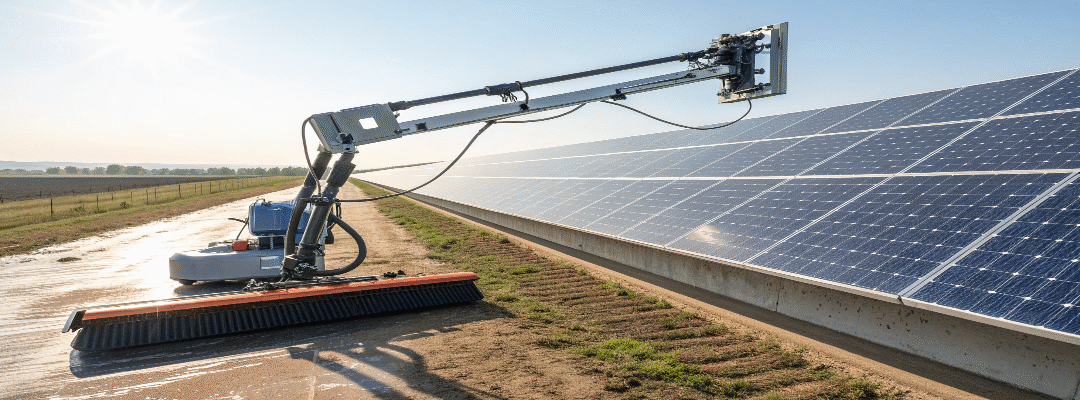Introduction
Solar panels work best when they’re clean. Dust, bird droppings, and pollution can block sunlight and reduce power output by 10–30%. Traditionally, panels are cleaned with water, but in many regions — especially India, the Middle East, and Africa — water is scarce and expensive.
Enter waterless solar panel cleaning machines — an innovative, eco-friendly solution that cleans panels without wasting a single drop of water.
What Are Waterless Solar Panel Cleaning Machines?
Waterless solar panel cleaning machines are automated or semi-automated systems that remove dust and dirt using rotating brushes, microfiber pads, or robotic arms instead of water.
- Mechanism: Soft brushes or rollers glide across panels.
- Operation: Can be manual, semi-automatic, or fully robotic.
- Technology: Some advanced machines use AI and sensors to detect dirt levels.
Why Go Waterless?
1. Water Conservation
- Cleaning 1 MW of solar panels with water can require 7,000–10,000 liters.
- Waterless machines eliminate this wastage — critical in arid regions.
2. Eco-Friendly & Sustainable
- Reduces water consumption and carbon footprint.
- Ideal for large solar farms in drought-prone areas.
3. Lower Operating Costs
- No need to buy, transport, or pump water.
- Saves thousands of rupees in annual cleaning expenses.
4. Better ROI
- Panels stay consistently clean, ensuring maximum energy generation.
- ROI improves as energy output increases by 10–15% compared to infrequent water-based cleaning.
Types of Waterless Cleaning Machines
- Manual Waterless Cleaners
- Lightweight, portable brush systems.
- Suitable for residential rooftops.
- Semi-Automatic Cleaning Machines
- Motorized brush rollers, often rail-mounted.
- Best for medium-sized solar installations.
- Robotic Waterless Cleaners
- Fully autonomous, AI-powered systems.
- Designed for large solar farms and industrial plants.
Case Example: Solar Farm in Rajasthan
- Capacity: 50 MW
- Traditional Cleaning: 3,50,000 liters of water/month
- Switched to Waterless Robots
- Saved 42 lakh liters of water annually
- Increased output by 12%
- ROI achieved in 2 years
Challenges of Waterless Cleaning
- Initial Investment: Higher than water-based cleaning.
- Heavy Dust Regions: May require more frequent cleaning.
- Compatibility: Some rooftop designs may need customized systems.
However, the long-term savings and sustainability benefits outweigh these challenges.
The Future of Solar Panel Cleaning
- AI & IoT integration → Robots that self-schedule cleaning.
- Drone-assisted cleaning → Emerging technology for rooftops.
- Hybrid systems → Combining waterless cleaning with minimal water spray for sticky residues.

